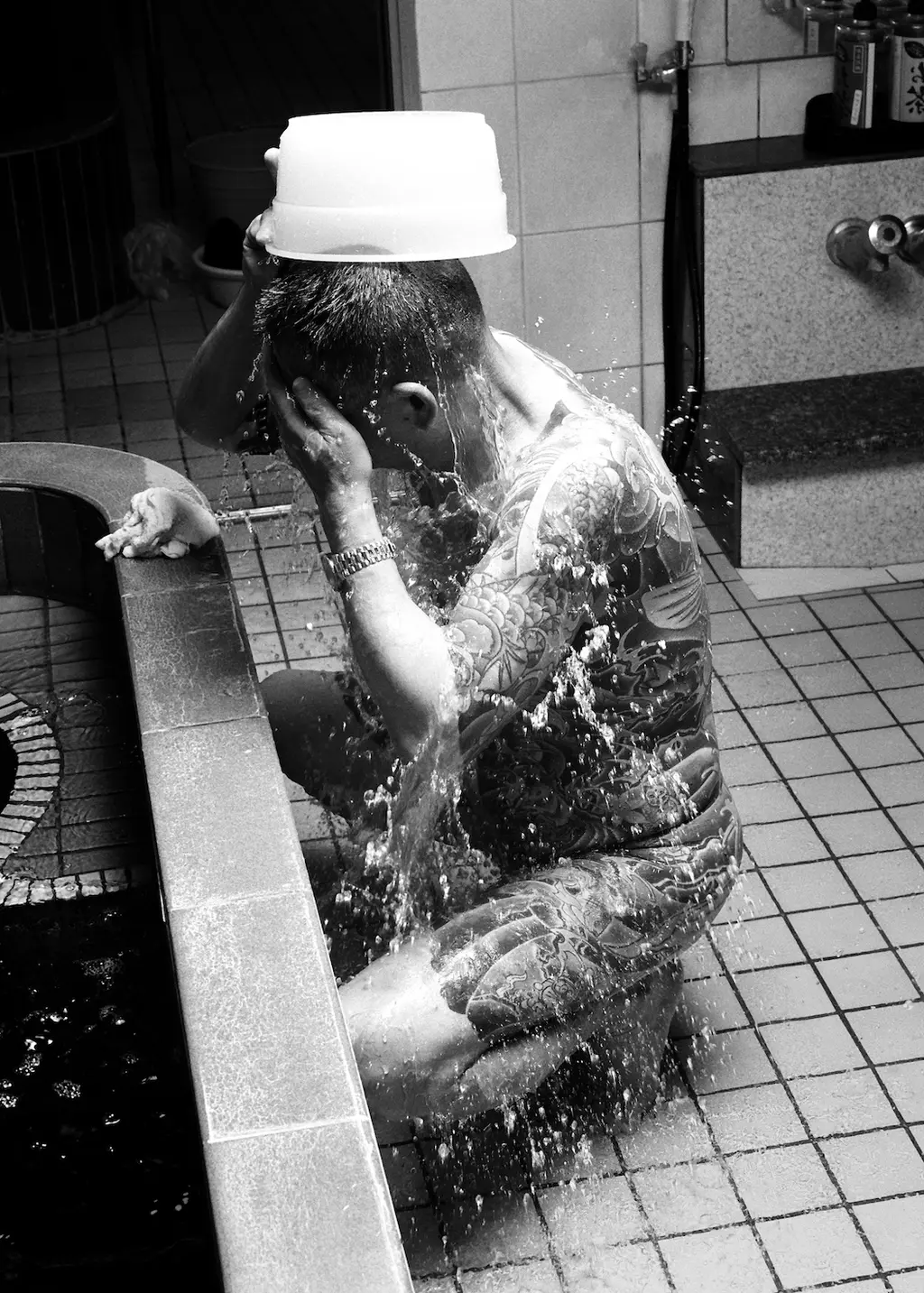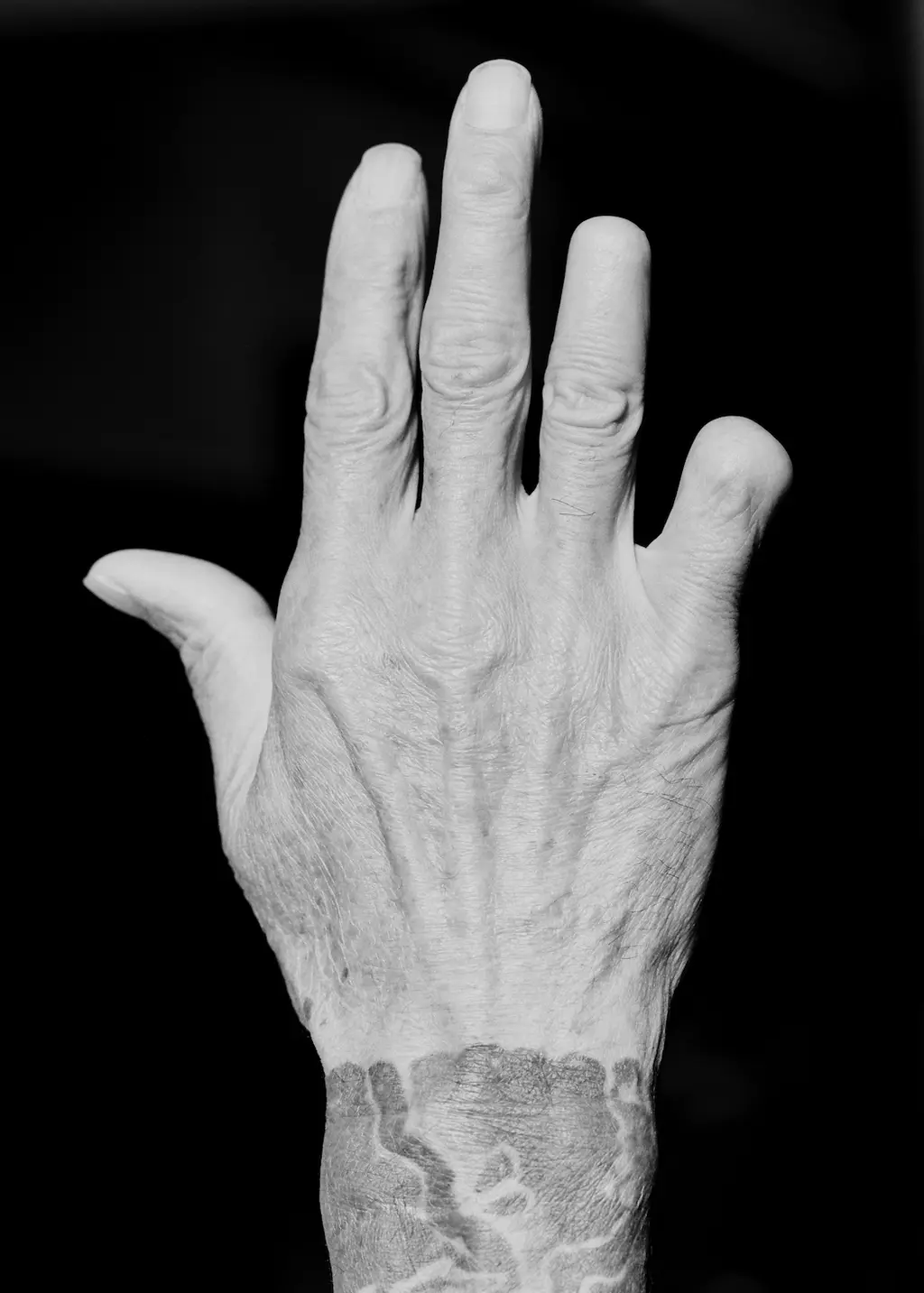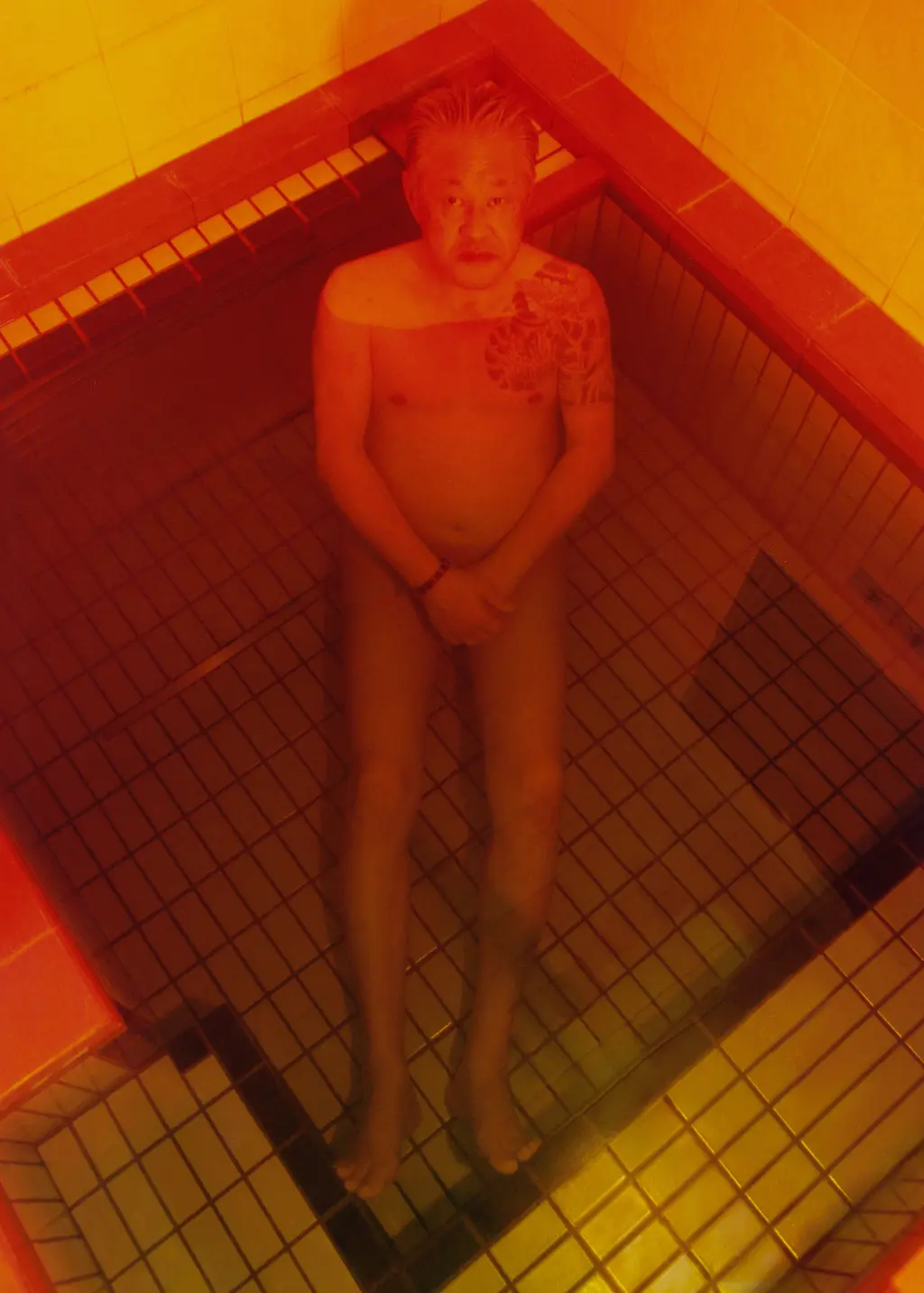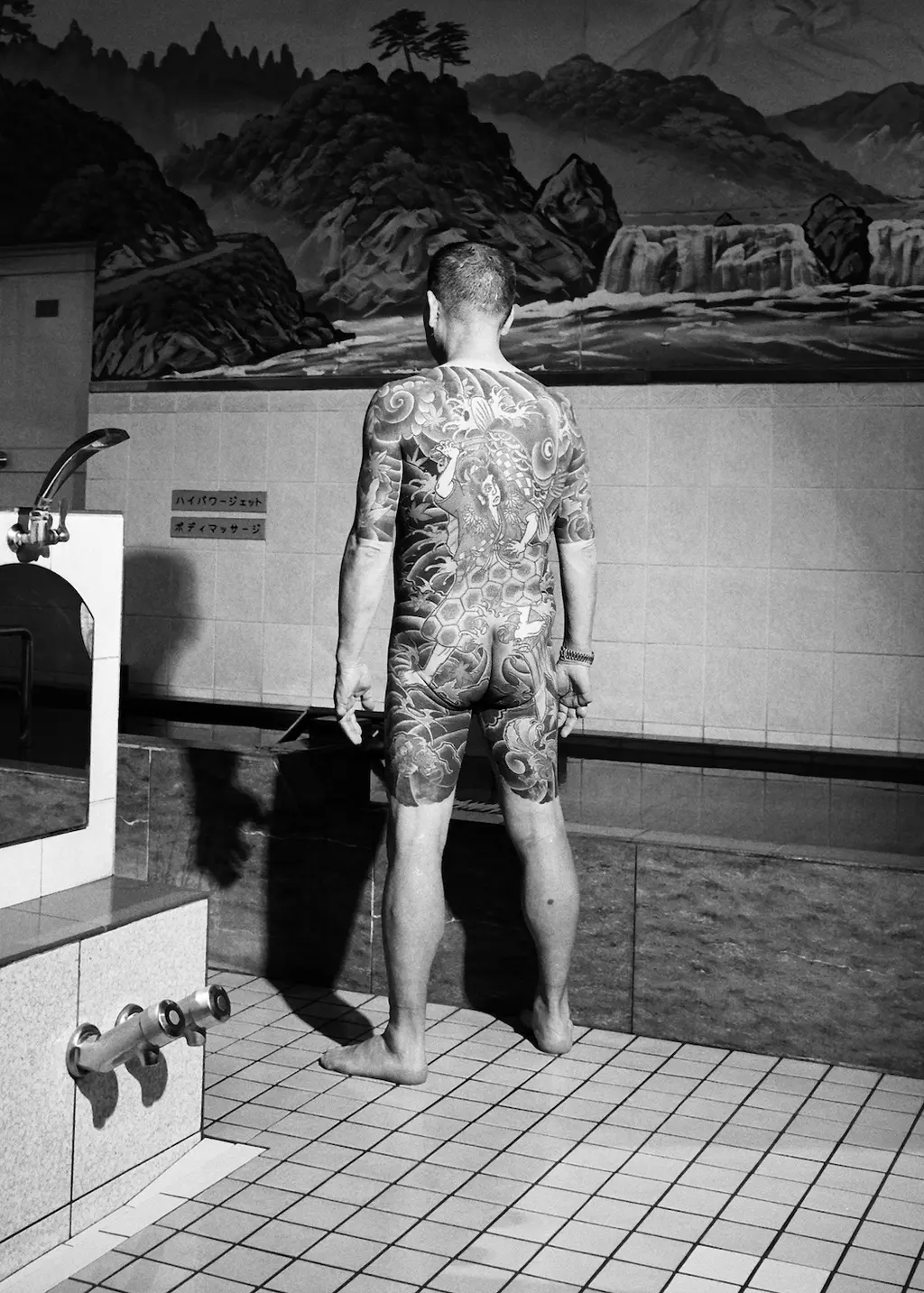Seven weeks with the Yakuza in Tokyo

Photographer Theo Cottle extended his trip to Japan to hang out with members of the criminal organisation in one of the city’s bathhouses.
Photographer Theo Cottle arrived in Tokyo for what he thought would be a two week trip in 2020. He ended up staying in Japan’s neon-lit capital for around seven.
He was there, originally, to work on a fashion campaign. But once that was done and dusted, Cottle found himself hanging out with and photographing members of the city’s infamous yakuza, gathering enough material to put together an intimate book titled 893 Yakuza: The Setting Sun.
With a history dating back to the 17th century, the yakuza are known for their involvement in Japan’s criminal underworld, long depicted in the yakuza film genre (Graveyard of Honor and Violent Cop are among the most significant). The crimes the yakuza are best known for committing include extortion, blackmail, loan sharking and drug trafficking; they also hold control over many bars, restaurants and various other businesses in Japan.
So, how does a London-based photographer, having travelled to Tokyo to shoot some snazzy fashion photos, wind up in a bathhouse with some of its members?


“A friend of mine who I was working with had a connection, a few calls were made and there was a lot of waiting [around] until something became possible,” Cottle says. “Naturally, it was quite difficult to arrange and I had to build some trust before being allowed in.”
Did he have any fears going into the project?
“Japan is an incredibly respectful place,” he says, remembering his first encounter with two members of the gang. On arrival, Cottle was presented with a pack of coffee, wrapped up in a little gift bag. “That shattered a lot of my initial ideas about them,” he continues. “We then walked around a market with my friend, his son and daughter while these yakuza members would walk off to buy them sweets and pay for rides.”
After a bit of back and forth, Cottle and the yakuza members arranged to meet in a bathhouse, partly, the photographer explains, as it was a chance to capture them in a more vulnerable setting.



Cottle’s photos are worlds apart from usual media depictions of the gang, all suits, samurai swords and sleazy alleyways. In 893 Yakuza, some members are seen naked and lying in the bath, their tattoos – a symbol of loyalty and dedication to the organisation – on full display.
“I wanted to challenge the common perception we have of these men,” Cottle says. “I’m fascinated by the tattoos they have and the stories they tell.” The photographer’s specific interest in the tattoos came from a visit to a bathhouse in Tokyo’s red-light district, Kabukicho. Sat next to a yakuza member with an impressive back-piece, he ended up having a conversation “in very broken English”.
“I can’t imagine this kind of interaction would have happened unless we were both naked,” Cottle says. “I also would have had no idea he was affiliated with them if I were to see him fully dressed in the day. They are very discreet.”
In an organisation where honour and respect rules, Cottle, as a result of his work, now has a different perspective of the gang altogether – especially since the yakuza has been in steep decline since the 1950s.
As a result of their hardened reputations, many members aren’t able to take out bank accounts, phone contracts, travel freely or even get insurance.
“A lot of the members are shunned by society, so much so that older members are getting prosthetic replacement fingers to hide their past,” Cottle says. “Much like a caged animal, which I can see is how society may view them.”
Get your hands on Theo Cottle’s 893 Yakuza: The Setting Sun here






